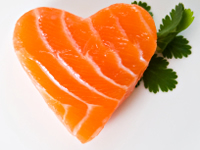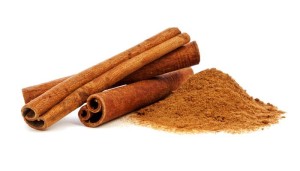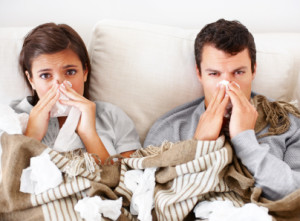-
Book Online Now - Acupuncture Solutions3900 Pebblecreek Ct #101
Plano, TX 75023972-612-4900 - 6501 Wesley St #A-1
Greenville, TX 75402903-213-3679 Learn more about…
#autumn #balance #behappy #fall #familytime #germs #healthlyliving #healthyskin #immunesystem #organs #psoriasis #seasons #sunscreen #thinkpositive acupressure acupuncture allergies anxiety coronavirus covid-19 depression diet digestion energy exercise headaches health heart herbs kidneys liver lungs meditation migraines nutrition pain pms qi sleep spring stress summer tcm Traditional Chinese Medicine winter
Immune support
5 Tips to Help Your Diabetes
 There are about 29 million people in the United States who suffer from type 2 diabetes, an illness that is becoming increasingly common and is also highly preventable. With lifestyle changes, diabetes can be managed and prevented.
There are about 29 million people in the United States who suffer from type 2 diabetes, an illness that is becoming increasingly common and is also highly preventable. With lifestyle changes, diabetes can be managed and prevented.
Aim for a healthy weight
When you have extra weight, this can cause an increase in blood sugar. Maintaining a healthy weight can keep your blood sugar at more normal levels and better overall health.
Exercise
Exercise is very important when it comes to managing or preventing type 2 diabetes. Regular exercise can help lower weight, lower stress levels, blood pressure, cholesterol and triglyceride. Even just by adding in walks into your day can make a difference. Aim for 30 minutes of aerobic exercise at least four times a week.
Diet
Having a healthy diet is a lifestyle change, and that can be hard for people.
Keep carbs in check, they tend to affect your blood sugar the most. Know how many carbohydrates are in the food you’re eating to keep them at the level you need to be for managing your blood sugar.
Avoid processed sugar. Sugar in the form of sucrose or high fructose corn syrup can spike blood sugar rapidly. For people with diabetes, it is especially dangerous.
Be on top of your schedule
Diabetes requires an everyday awareness as well as a schedule when it comes to medication and insulin. If you have trouble remembering to take your medication or test yourself regularly, try setting reminders on your phone or keep a calendar near by. Consistency can make all the difference.
Try acupuncture
Neuropathy is one result of diabetes, acupuncture can help reduce this nerve pain by boosting the release of endorphins, the body’s natural pain reliever. Acupuncture has almost no side effects and is a great complementary option to reducing chronic pain.
http://www.webmd.com/diabetes/guide/natural-remedies-type-2-diabetes
7 Acupuncture Tips for a Healthy Fall | AcuTake
 Fall is right around the corner.
Fall is right around the corner.
New seasons are an opportunity to assess our states of health and realign with our natural rhythms.
From an acupuncture perspective, fall is about refinement. It’s time to pare down, to let go of the excesses we allowed ourselves in summer and focus on what’s necessary for winter.
In acupuncture theory, humans are viewed as microcosms of the natural world that surrounds them. Weather and climate, particularly during the transition from one season to another, factor significantly into acupuncture diagnoses and treatment plans.
The transition into fall is especially noteworthy because it signifies moving from the more active seasons to the more passive. This directly impacts how we feel, and how we prevent and treat illness.
How to Stay Healthy This Fall
Each season is linked with a natural element, organ and emotion. The element, organ and emotion of fall are, respectively, Metal, Lung and grief. These three things usher us throughout the season, serving as barometers for where we’re at and offering insight on how to be better.
With Metal, Lung and grief as our guides, here are seven acupuncture tips for staying healthy this fall.
Make a list of your priorities
Fall is when we ought to embrace our Metal-esque qualities: strong, definitive, focused, discerning. It is time to get down to business, to gain clarity about what really matters to us.
As satisfying as this can be, it also can be overwhelming. If I hunker down at work, how will I make time for the kids? If I focus on cooking healthy meals and eating at home to save money, how will I socialize with friends?
Make a list of which priorities deserve your attention. Write them down and glance at the list periodically throughout the season.
Fall heightens our innate ability to get stuff done. Take advantage of it by reminding yourself where to focus.
Wear a scarf
Acupuncturists are always going on about wearing scarves. It’s for good reason.
Lung, the organ associated with fall, is considered the most exterior organ. It is the first line of defense against external pathogenic factors. As the weather turns cold and the wind picks up, the Lung organ is extra vulnerable.
Further, pathogenic factors such as cold and wind invade the body at the back of the neck, so keeping that area protected is very important in the fall. Even if it’s sunny, always bring a scarf when you head outside.
Do acupressure on Lung 7

One of the best points for strengthening the Lung organ is Lung 7. It helps promote the descending function of the Lungs, which makes it a great point for cough, shortness of breath and nasal congestion.
Lung 7 also is one of the most effective points for neck pain and stiffness. As mentioned above, wearing a scarf helps, but for protecting yourself against any residual wind and the resulting head and neck tension, Lung 7 will come in handy.
Lung 7 is easy to access yourself. Make a thumbs-up sign. When you do that, you’ll see a depression at the base of your thumb (referred to as the anatomical snuffbox). From that depression, Lung 7 is located approximately two finger widths up your arm.
Stay hydrated
Dryness of all kinds is common in fall. Since Lung is the most exterior organ, it is the organ that relates most closely to the skin. Dry skin and even rashes tend to show up in fall. Drink a lot of water and keep your skin hydrated with non-alcoholic (alcohol will dry you out more) moisturizer.
Another reason to stay hydrated is to regulate digestion. The Lung’s paired organ is Large Intestine, so sometimes digestive issues can flare up this time of year. Constipation, due to the dryness of the season, is most common, especially in people who struggle with the “letting go” aspect of transitioning into fall.
Use a neti pot
As fall encourages us to let go of the inessential priorities in our lives, many of us also find ourselves letting go from our nasal passages. Bring on the tissues! Fall is the most common time of year for the onset of nasal infections and post-nasal drip, both of which plague many people well into winter. Keep a neti pot in the shower and use it regularly throughout the season to help keep your nasal passages clear.
Reframe grief
The emotion associated with fall is grief. This is the time of year to pull inward, to grieve letting go and to reflect on any unresolved sadness. This can be an adjustment after the surge of energy and mood that many of us experience during summer, but it is normal to feel somewhat somber and pensive in the fall.
The inability to settle into this emotional shift, or transition out of it, may suggest an imbalance. However, before labeling yourself with seasonal affective disorder, or SAD—a common biomedical diagnosis for people who feel depressed in the colder, darker months—consider that you may be experiencing a natural heightened awareness of grief. If you sense it might be more than that, by all means, see your doctor.
Eat warm foods
Step away from the salad! The cool, raw, refreshing salads of summer will not do you any favors come fall. Just as we need to start keeping our bodies warmer on the outside, we need to stay warm on the inside as well.
In fall, eat warm, cooked food. Instead of cold cereal with milk, choose oatmeal. Trade the salads for oven-roasted veggies over brown rice. When cooking, throw in some onions, ginger, garlic or mustard—these pungent foods are known to benefit the Lung organ.
Veggie wise, root vegetables such as beets, turnips, carrots, parsnips, sweet potatoes, pumpkin and squash are ideal. If you go for out-of-season vegetables, make sure they are cooked. If you’re craving fruit, reach for something seasonal such as apples, pears, grapes, figs or persimmons.
Wishing you a happy and healthy fall.
3 Tips for Ovary Health
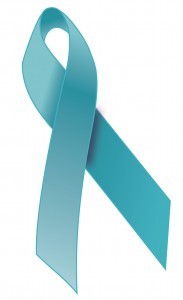 There are a number of complications that can happen to a woman’s ovaries over her lifetime. Ovarian cysts commonly occur and can go away without treatment, while more serious problems like ovarian cancer require extensive treatment. The best way to treat these conditions is with preventative care. Below are tips to fit into your daily routine for better ovary health.
There are a number of complications that can happen to a woman’s ovaries over her lifetime. Ovarian cysts commonly occur and can go away without treatment, while more serious problems like ovarian cancer require extensive treatment. The best way to treat these conditions is with preventative care. Below are tips to fit into your daily routine for better ovary health.
Women with polycystic ovary syndrome, a condition involving the imbalance of sex hormones, have a higher risk of ovarian cancer and obesity. Because of this, it is even more important that those with PCOS have a healthy diet.
Foods to consider into your diet:
Lean Proteins: Limiting saturated fats can help decrease the body’s inflammation and lower the chance of ovarian cancer. Good sources of lean proteins include fish, chicken, lentils, beans and eggs.
Fruits and Vegetables: Fruits and vegetables are never a bad choice to include more of into your diet. They are packed with vitamins and antioxidants to help strengthen your body’s immune system and fight disease. Tomatoes and onions can especially help prevent ovarian cancer.
Nuts and Seeds: Healthy fats are important for ovary health. The unsaturated fats in nuts and seeds can provide omega-3 fats that can reduce inflammation and help decrease your cancer risk.
2) Exercise
Women who are overweight or obese have a higher risk of developing ovarian cancer. Along with a healthy diet, it is important to have regular exercise to maintain health. Exercise is thought to help the body’s immune system, which in turn can help prevent obesity and ovarian cancer. Starting off with moderate exercise that includes taking a walk most days or light jogging can even be impactful on lowering your risk.
Chinese Herbs:
Cinnamon and rehmannia is a common combination of herbs that has been used in traditional Chinese medicine to treat ovarian cysts. These herbs can be found out at health stores as well as be ordered online.
Brassica vegetable extract:
Brassica vegetable extract is a natural antioxidant that can help prevent disease such as cancer, diabetes and other chronic diseases. Brassica vegetables include kale, broccoli, cauliflower, cabbage and Brussels sprouts. These vegetables contain glucosinolates, which work as an anti-carcinogen, helping to decrease the risk of cancer. You can find brassica vegetable extract in your local health food store.
Along with these lifestyle guidelines, consider acupuncture for preventative treatment as well as managing an existing problem to help get you back on the road to better health.
Acupuncture and Ovarian Health
 Acupuncture has proven helpful in strengthening the body’s immune system, as well as reducing symptoms of cancer treatment. Because acupuncture treats the whole body, it can help increase immune strength that can fight against disease like ovarian cancer and polycystic ovary syndrome. By using acupuncture points, acupuncture is able to release blockages that may be preventing the body from its natural flow.
Acupuncture has proven helpful in strengthening the body’s immune system, as well as reducing symptoms of cancer treatment. Because acupuncture treats the whole body, it can help increase immune strength that can fight against disease like ovarian cancer and polycystic ovary syndrome. By using acupuncture points, acupuncture is able to release blockages that may be preventing the body from its natural flow.
For those going through cancer treatment for ovarian cancer, acupuncture can act as an important alternative to help with symptoms of treatment. Acupuncture has been known to help nausea caused by chemotherapy and reduce overall pain. Cancer treatment involving chemotherapy and other drugs can have many side effects; acupuncture works to counterbalance these symptoms with almost no side effects or pain.
Although ovarian cysts can sometimes go away on their own, other times they require extra treatment to be resolved. Ovarian cysts can be caused by a number of factors including an imbalance of hormones. Acupuncture works by bringing the body back to balance, regulating blood supply and hormone levels.
If you are battling with ovarian complications or looking for preventative care, consider acupuncture as an alternative safe treatment option.
5 Alternative Treatments and Home Remedies for Psoriasis
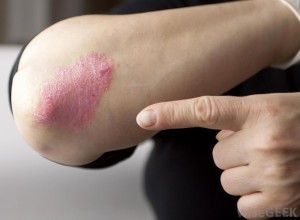 For people with psoriasis, suffering from painful symptoms like inflamed, flaking and red skin is not pleasant. The chronic skin condition is due to an overactive immune system that can be triggered by a number of internal and external factors. Many Western treatments include steroid creams and oral medications that come with a slew of unwanted side effects.
For people with psoriasis, suffering from painful symptoms like inflamed, flaking and red skin is not pleasant. The chronic skin condition is due to an overactive immune system that can be triggered by a number of internal and external factors. Many Western treatments include steroid creams and oral medications that come with a slew of unwanted side effects.
Below are alternative treatments that are safe and natural and can help reduce symptoms of psoriasis, leading you back to better health.
1. Herbal Remedies
● Aloe Vera: The gel from this cactus plant can be used generously on your skin to reduce redness and scaling caused by psoriasis. Aloe vera can be found in almost any grocery or health store.
● Tea Tree Oil: Tea tree oil is thought to have antiseptic properties. It can sooth irritated skin or scalp and can be applied daily.
● Turmeric: Turmeric has strong anti-inflammatory and antioxidant properties. Because of this, turmeric has been found to reduce psoriasis and psoriatic arthritis flares. Turmeric can be found in pill form as well as powder form to be added to food.
● Dead Sea Salts: Soaking in a bath with Dead Sea salts or Epsom salts can remove scaly skin and reduce itching. It is recommended that you use warm water and stay in the tub for 15 minutes.
2. Mindfulness/Meditation
Mindfulness and meditation practices have been found to be effective in people suffering with chronic pain like psoriasis.
Meditation is the practice of focusing your attention on the moment and ridding yourself of all external thoughts you may be having. This can lead to a state of relaxation and calmness, bringing balance to your body and mind.
Mindfulness, which is practiced in meditation, includes becoming completely aware of your body, externally and internally. This can be a seated meditation that is focused on awareness of mind, body and senses.
3. Exercise
Not only is exercise important to maintain overall health and wellness, it is especially beneficial for people with psoriasis.
Because people with psoriasis have an increased risk of heart disease and type 2 diabetes, regular exercise can prove very helpful.
Many find it hard to exercise because of the chronic pain associated with psoriasis. Exercise programs in the water prove to be an effective alternative that is easier on the body and still allows you to build endurance and strength.
Other simple ways to fit more exercise into your day include short walks, taking the stairs and stretching.
4. Massage
Seeing a licensed massage therapist can help reduce symptoms and pain. Massage promotes the function of muscle and connective tissue and can increase relaxation and circulation in the body.
5. Acupuncture
Acupuncture has been proven to be effective in minimizing chronic pain in patients. Acupuncture takes a holistic approach with the body and symptoms you may be experiencing. By returning the body to its natural flow, acupuncture can help reduce the intensity of symptoms of psoriasis.
Home Remedies:
● Soak a towel in cold milk and apply to affected area to relieve itching.
● Add ½ cup ground oatmeal into a warm bath.
● Rub the affected area with the inner side of a banana peel.
● Apply aloe vera gel to affected area.
● Cut several fresh willow branches into 3-inch stems and place in a pot with plenty of water. Bring to a boil, then simmer until water becomes black. Wash affected areas with the water three times daily.
● Slice 15 water chestnuts and soak in 3 oz. of rice vinegar crush and store in a sealed jar. Apply the paste to affected area and cover with gauze. Change daily.
Sources:
https://www.psoriasis.org/about-psoriasis
Germ Warfare
You never have to wonder when the cold and flu season is around the corner. The pharmaceutical industry will be sure that you are reminded of its arrival. The pharmaceutical industry and the medical community at large are depending on you to leave the fate of your health and well being up to the workings of chemical-laden pills and shots rather than the innate power that runs your body and the living world around you.
The reality is that germs don’t make you sick. Rather, your body’s inability to fend off germs and foreign invaders is what results in you succumbing to illness. Think about it… How is it possible that a family of 5 people living under the same roof can have completely different reactions during flu season?
Assuming that everyone is exposed to the same germs and viruses, if the sickness were attributed completely to the virus, everyone would get sick and exhibit the same reaction and symptoms.
What happens in reality is that one or two family members get ill while the others don’t. Clearly the issue is not the germs, but the body’s response to them, caused by an individual’s immune system.
Chances are the last time you got sick you were running yourself ragged, missing sleep, eating improperly, slacking on your nutrition, all stressed out from work, skipping your acupuncture sessions, and neglecting your workouts. This is a vicious pattern that many of us fall into and it’s one that weakens the body and allows germs to take hold.
Your best defense against the flu, colds, or any other germ-borne illness is not to drug yourself, but to bolster your internal defenses. You stand your best chance of being at your healthiest when you have an optimally functioning nervous system and immune response.
So come in for an acupuncture tune-up, keep your lifestyle habits in good order, and maintain a positive attitude. Do so, and those pesky little germs don’tstand a chance!
